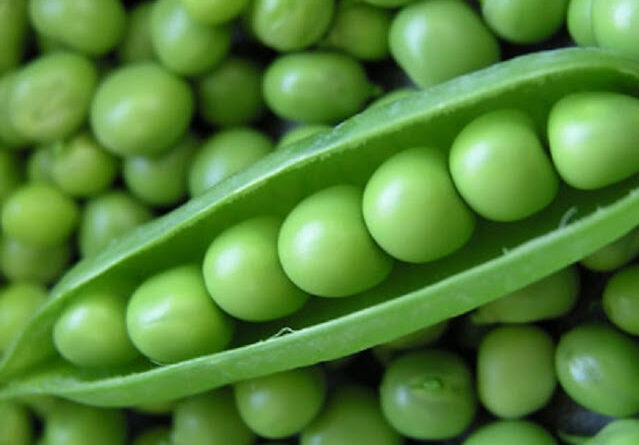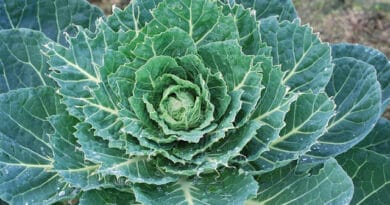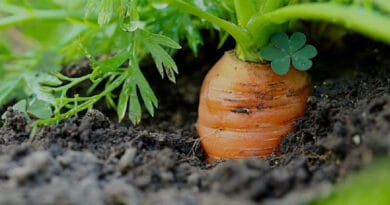Cultivation of Pea
Cultivation of Pea: It helps livelihoods by producing food and having the opportunity for processing and exporting.
Pea (Pisum sativum L.) is an annual herbaceous winter-season vegetable crop in the family Fabaceae. India is the second-largest producer of peas in the world and has a 21% share of Global pea production. The crop is generally cultivated for its green pods. It is highly nutritious and is rich in protein. It is used as a vegetable or in soup, canned, frozen, or dehydrated. It is cooked as a vegetable along with potatoes. Split grains of peas are widely used for dal. Pea straw is a nutritious fodder.
Pea is a native of Europe and Northern Asia. Ethiopia is probably the main center of origin of the garden pea
Nutritive Value of Pea;
| Serving Size 100 g | %DV | |
| Calories | 81 kcal | |
| Total Carbohydrate | 14 g | 4% |
| Dietary Fiber | 5 g | 20.00% |
| Sugar | 6 g | |
| Protein | 5 g | 10% |
| Cholesterol | 0 | 0% |
| Saturated fat | 0.1 | 0% |
| Sodium | 5 mg | 0% |
| Potassium | 244 mg | 9% |
| Iron | 8% | |
| Calcium | 2% | |
| Magnesium | 8% | |
| Vitamin C | 66% | |
| Vitamin B6 | 10% | |
| Vitamin D | 0% | |
| Cobalamin | 0% | |
| *Percent Daily Values are based on a 2,000-calorie diet. Your daily values may be higher or lower depending on your calorie needs. Source ;USDA | ||
Classification of Peas ;
Pea can be classified into four types of classes. These are as follows ;
Climate requirements for pea cultivation
Soil and its preparation for pea cultivation
Garden peas can be grown on a variety of soils, from light loam to clay. The best results are obtained from well-drained, loose, friable loamy soils. The best pH range for peas is between 5.5 and 6.5
The land should be prepared thoroughly. This can be achieved by ploughing the field with desi plough, followed by one or two harrows to remove the weeds and to make the soil better
Improved Varieties of Pea ;
Variety | Characteristics |
Asauji | It is a dwarf, greenish smooth seeded variety. Pods are produced singly; flowering in 30-35 days after sowing, and blossom appears in 6-7 nodes. Pods are approx 8 cm long, curved, dark green, narrow, and appear round when fully developed Seven seeded, and giving a high shelling percentage (45%). |
Early Superb | It has yellowish-green foliage. It flowers in about 45 days and the first blossom appears at an 8th-10th node. Pods are borne singly; these are dark green, and curved with 6-7 smooth seeds. This variety gives a high shelling percentage (40%). |
Arkel | Its plant is dwarf but the growth is vigorous and may grow up to 45 cm. Flowers are white and are borne in double on a few lower nodes and single afterward. It flowers in 35-40 days from the sixth node onwards. Pods are dark green, 8.5 cm long, incurved towards the sutures, and pointed distal end with 8-10 well-filled, wrinkled seeds. It gives a high shelling percentage (40%). It is suitable for both the fresh market and dehydration. It takes 50-55 days for first picking. Green pod yield 4-5 t/ha. This variety is highly susceptible to powdery mildew. |
Alaska | An introduced variety from England. Pods are light green and appear singly with 5-6 small, bluish-green seeds. |
Jawahar Matar 3 (JM 3, Early December) | Plant height 70-75 cm with bushy growth habit. Flower colour white. pods light green, roundish-oval in shape with 4-5 wrinkled seeds. It gives high shelling percentage (45%). This variety suffers severely from powdery mildew. First picking starts at 50-55 days after sowing. Average yield 4 t/ha. |
Jawahar Matar 4 (JM 4) | Plant height 65 cm, foliage and stem green. The first picking can be taken after 70 days. Pods are green, medium in size (7 cm) with 6-7 green, wrinkled and sweet seeds. It is highly susceptible to powdery mildew. Average pod yield 7 t/ha with 40% shelling. |
Pant Matar 2 (PM-2) | Plant height 50-55 cm; fruit setting starts from 6th node. Pods are green, relatively small in size with 6 sweet and wrinkled seeds. The first picking starts 55 days after sowing. It is also highly susceptible to powdery mildew. Average pod yield 7-8 t/ha. |
Mid Season Varieties of Pea ;
Variety | Characteristics |
T-19 | This medium-tall and double-podded variety. First blossom appears at the 12-14th node after 60 days. Pods are yellowish green, slightly curved, 8.5 cm long with 6-7 wrinkled seeds with a 45% shelling percentage. |
NP 29 | This high-yielding and wrinkled seeded plate variety was developed at IARI through selection. Plants are medium-tall with green foliage. The first blossom appears at the 14-16th node after 80 days from sowing. Pods are borne in double, green, straight, 7.5 cm long with 6-7 seeds. shelling percentage is 50%. It is suitable for dehydration purposes. |
Jawahar Matar 1 (JM1 or GC 141) | Plant height 65-70 cm, bushy, foliage green, Flower white with two flowers per axil. Pods are straight and big (8.8 cm) with 8-9 big, sweet and wrinkled seeds. It is susceptible to powdery mildew disease. Average pod yields 12 t/ha with 52% shelling. |
Jawsahar Matar 2 (JM 2) | Pods are dark green, big, curved, with 8-10 sweet seeds. Seeds are wrinkled, green, and bigger. It is susceptible to powdery mildew. |
Pant Uphar (IP-3) | Pant height 70-75 cm with relatively thin leaflets of light green Flower white and two buds are borne per axil; pods are round and 7-8 cm in length with yellowish and wrinkled seeds. The first picking starts 75 to 80 days after sowing. Susceptible to powdery mildew disease, but tolerant against pea stem fly. Average pod yield 10 t/ha with 52% shelling. |
Punjab 88 (P-88) | Plants are dwarf, vigorous, erect, with dark green foliage; one or two flowers per axil. Flowering after 75 days and first picking after 100 days of sowing. Pods are dark green, long (8-10 cm), and slightly curved at the center with 7-8 green, wrinkled, and less sweet seeds. Highly susceptible to powdery mildew disease. Average yield 15 t/ha with 47% of shelling. |
Azad P-2 | A powdery mildew-resistant variety. Plants are tall (130-150 cm), erect with light green foliage and white flowers. Pods are medium in size, light green, straight, smooth, firm, borne in a cluster of two with 6-7 wrinkled and brownish seeds. Crop duration 90-95 days. Average yield 12t/ha. |
Jawahar Pea 83 (JP 83) | Plants are dwarf (50 cm), pods are big and curved with 8 big, green, and sweet seeds. Average pod yield 12-13 t/ha. |
Sowing of Pea Seeds ;
(a) Sowing time of Peas. The pea is generally sown in India in the Rabi season from the beginning of October to the middle of November in the plains and from the middle of March to the end of May in the hills. Sowing of seed during the first week of November is the proper time to get a higher yield
(b) Seed rate. The optimum seed rate is 25 to 30 kg per acre for field pea. The seed requirement for early variety is 50 kg, and the main season variety is 40 kg per acre.
(c) Method of sowing. The pea is generally sown by broadcasting. But it may also be sown by dibbling or behind the plough. The seeds are soaked in water overnight before sowing for better germination. Seeds treated with rhizobium culture give higher yields. Soaking of seeds in G.A. 10 ppm for 12 hours gave the highest germination & yield.
Manuring in Pea Crop;
Intercultural Operations in Pea Crop
(b) Weed control. It is difficult to control the weeds of the Pea field by the mechanical method as the crops are sown in rows in closed spacing. The use of herbicides has been proved very much effective. Atrazine, Propazine, and Simazine at 0.54 kg per acre gave good broadleaf weed control and late control of wild oats damage the Peas. Prometryne @ 400 gm per acre was most effective in improving vegetative growth and yield of Pods.
Irrigation in Pea Crop;
Disease and Pest of Peas ;
Disease | Symptoms | Control |
Wilt | The symptoms may be seen in the seedling stage. The symptoms are premature yellowing and withering of young leaves during the seedling stage and advanced stage. Disease causes maximum loss if the crop is early sown. | Seed Treatment with Thirum (2gm.) Carbendazim (1gm.) /kg of seed; ii) Adopt crop rotation; iii) Avoid early sowing in badly infested areas. |
Powdery Mildew | The symptoms first appear on the leaves and then on other green parts of the plant. They are characterized by patchy growth on both the surfaces of the leaf and also on the tendrils, pods, and stem. In case of severe infestation, the plant dies prematurely. | i) Adopt resistant var. like Pant Pea-5, Malviya-15, JP-885, HUP-2, etc.; ii) Spraying with Karathane @ 1 ml/liter or wettable sulfur @ 3 gm/liter or Dinocap @ 1 ml/liter of water and repeat after 10-15 days, if necessary; iii) Avoid late planting; iv) After harvest collect the plants left in the field and burn them. |
Rust | It is caused by fungus. The stem of the plant becomes malformed and the affected plant dies out. All the green parts of plant are affected. Yellow spots having aecia in round or elongated clusters. Then the uredopustules develop which are powdery and light brown in appearance. | i) After harvest, the affected plants trash should be burnt; ii) Spray the crop with Mancozeb 75 WP @ 2 g / liter of water. |
Insect- Pest of Pea
Pest | Symptom | Control |
Pea Stem fly | The maggot of the insect damages the internal tissue, consequently, the entire plant dies. The damage is more acute when crop is sown early | i) Mix 30 kg/ ha Carbofuran (Furadon) 3 % granules or 10 kg /ha Phorate (Thimet) 10 % granules in the soils before sowing the crop; ii) Avoid early planting. |
Leaf Miner | The larvae of the insect make tunnel in the leaf causing severe damage. The damage is more during Dec.to Mar | i) 1 liter of Oxydemeton methyl (Metasystox) 25 EC in 1000 liter of water per hectare when the attack begins and repeat at 15-day intervals. |
Pea Aphids | They suck the sap of the cells, owing to which the leaves turn pale and yellow. In case of severe infestation, the plant growth is checked. Ultimately plant growth get stunted. | i) Spray 1.25 liter of Dimethoate 30 EC or oxydemeton methy (Metasystox) 25 EC in 1000 liter of water per hectare. Repeat the spray after 10-12 days. |
Spiny Pod Borer | It is a polyphagous insect. Caterpillar makes holes in pods to feed upon developing seed. Late varieties are prone to more damage than earlier ones. | i) Picking of green pods should be done 15 days after spraying; ii) Spray of 1.25 liter of cypermethrin in 1000 liter of water per hectare is safe and effective. |
Harvesting of the pea crop;
Peas are harvested for table use when the Pods are well filled and the young, tender Peas change in color from dark to light green.
Yield of peas per acre ;
1200-1600 kg Early Variety
Mid-season and late variety: 2400-2800 kg



